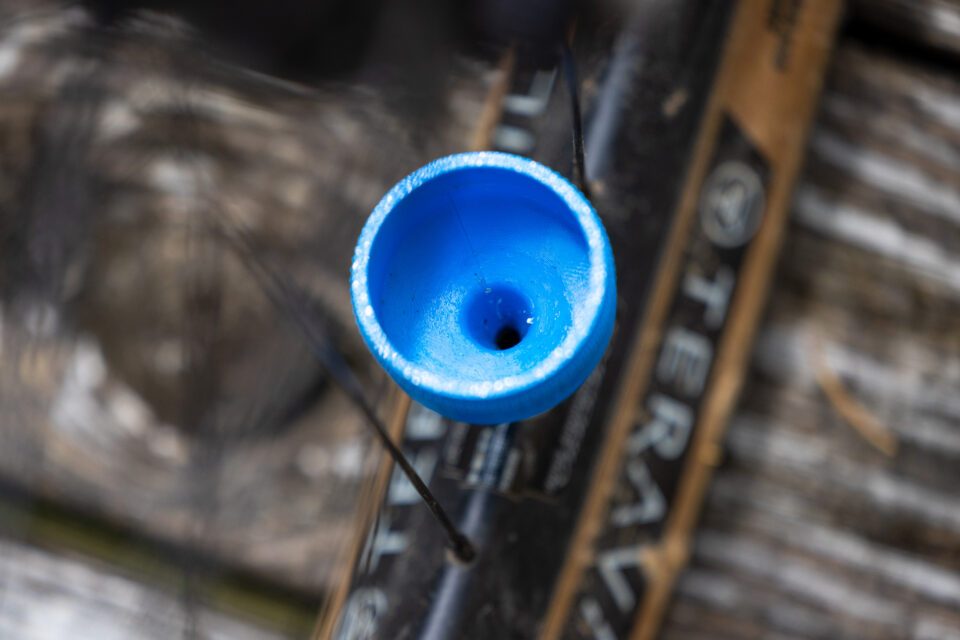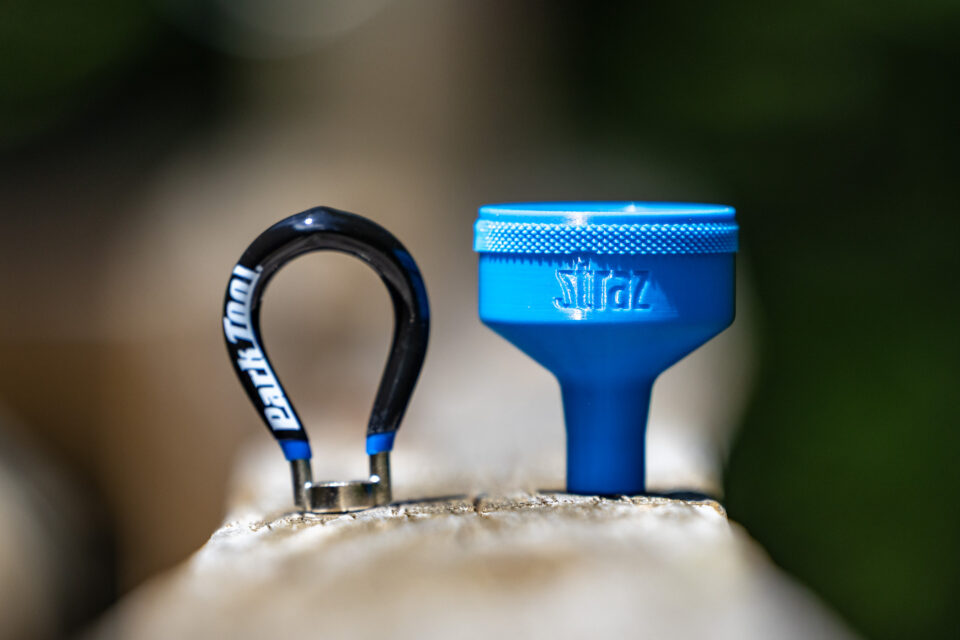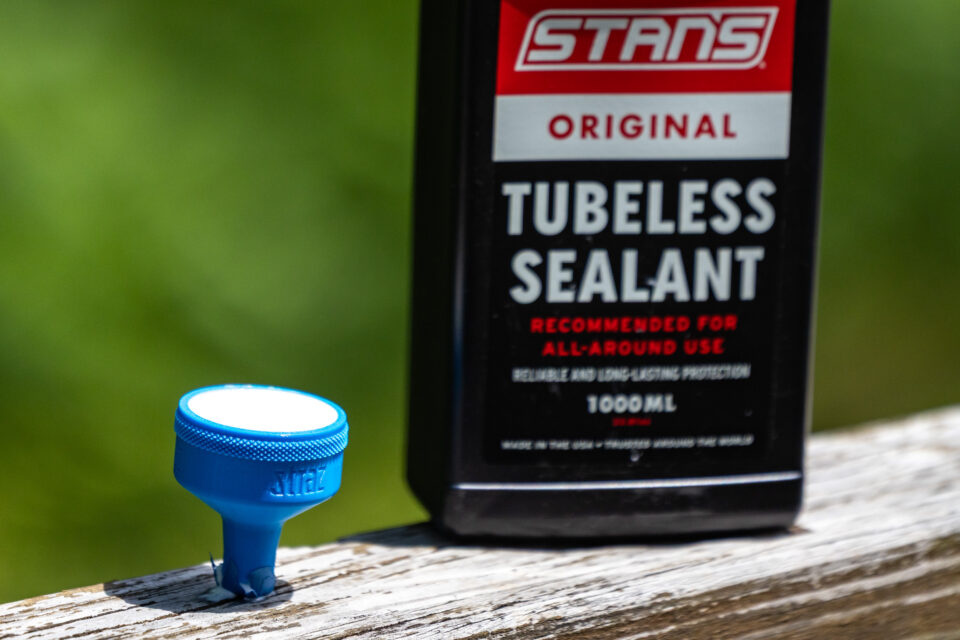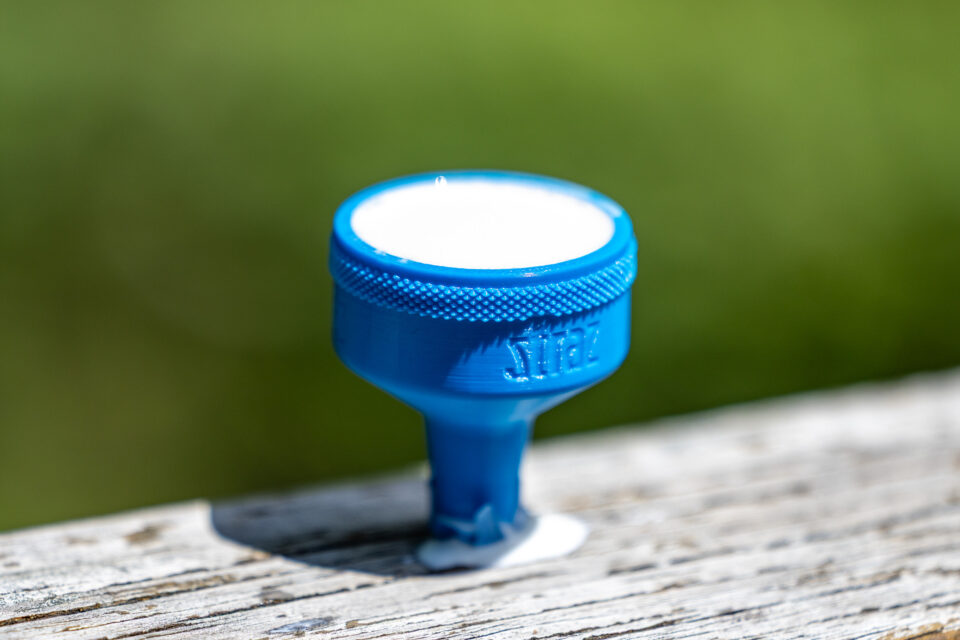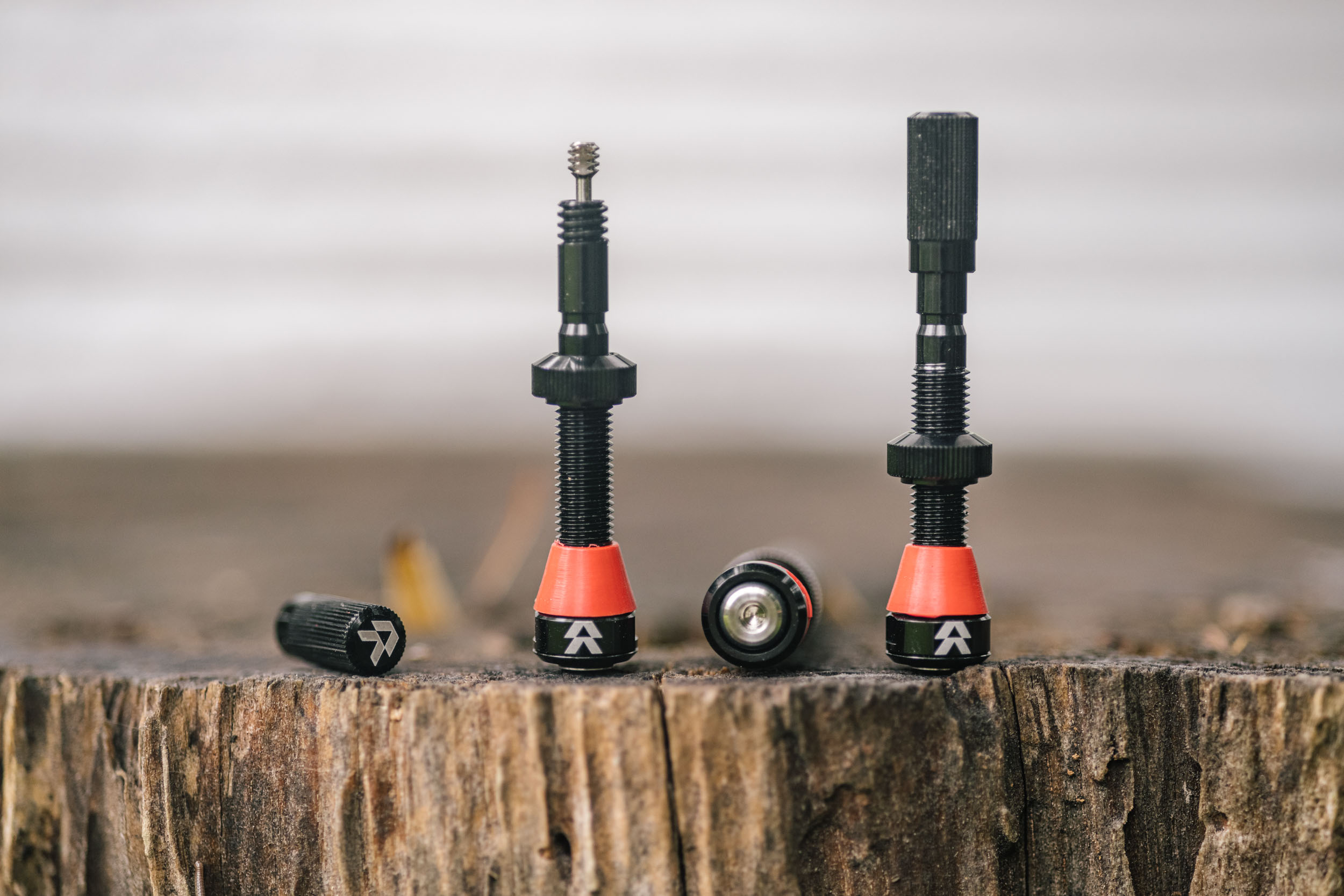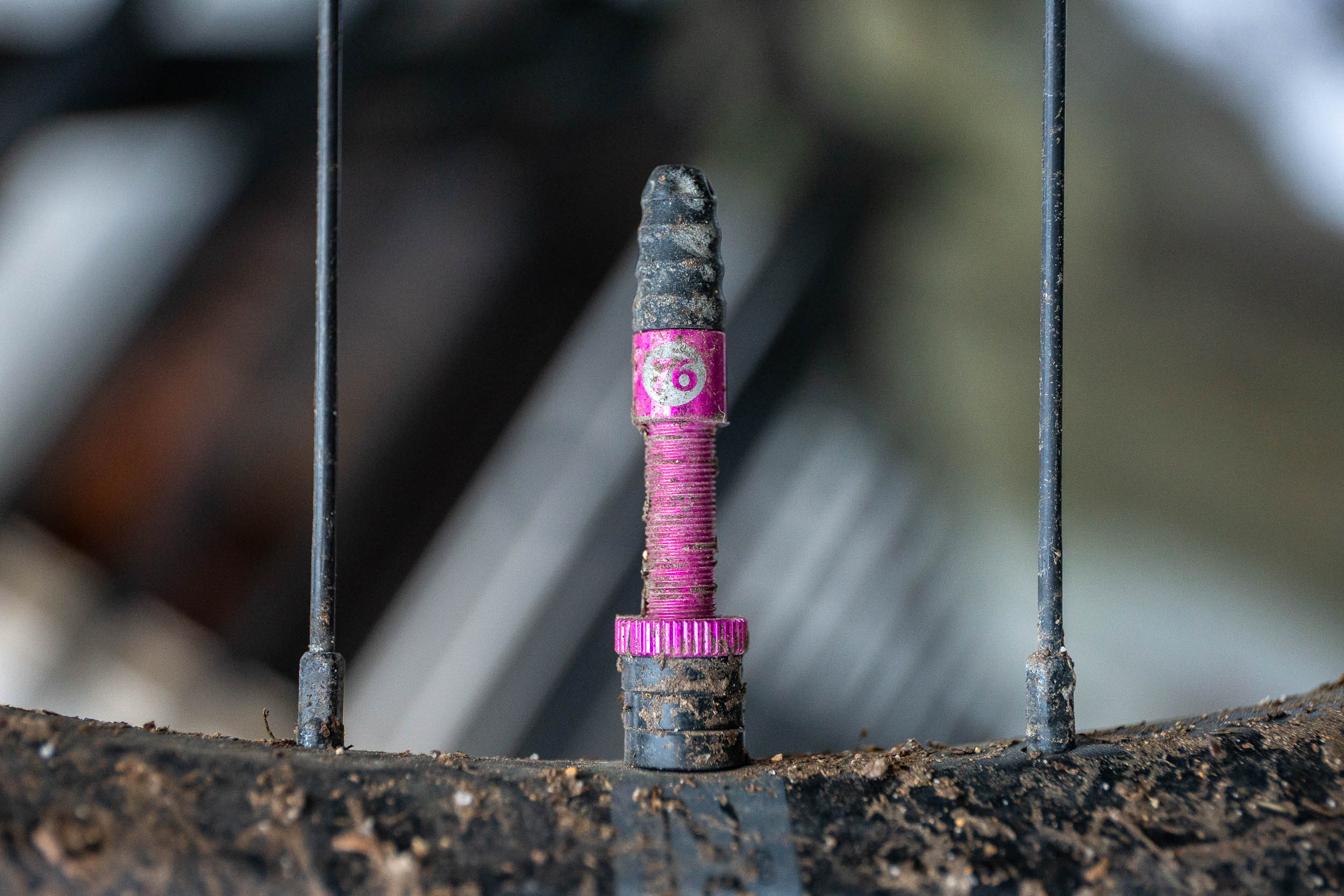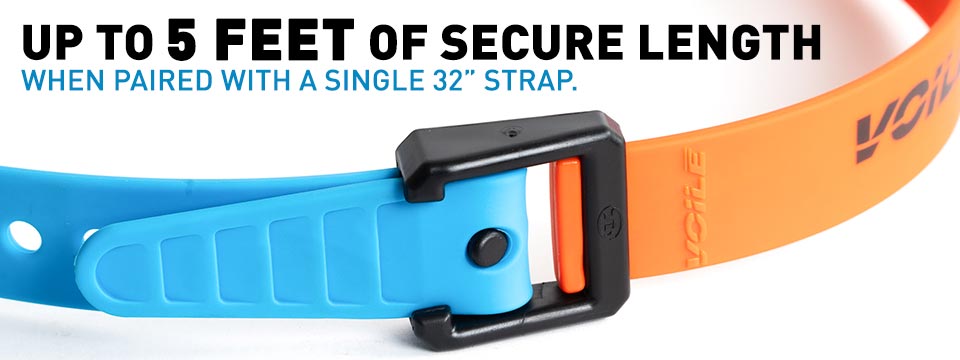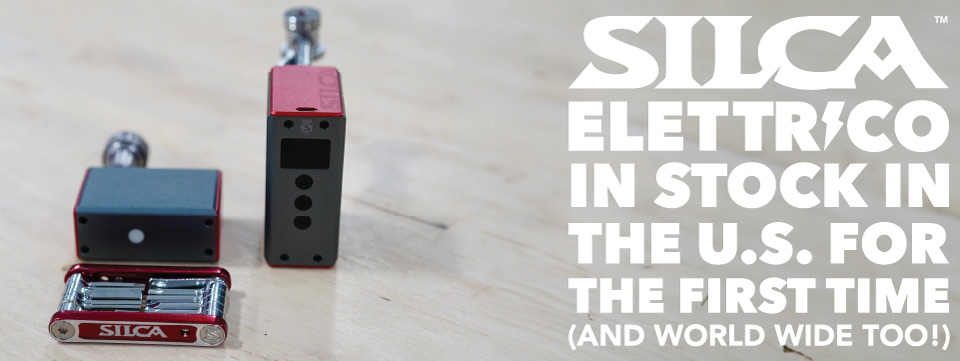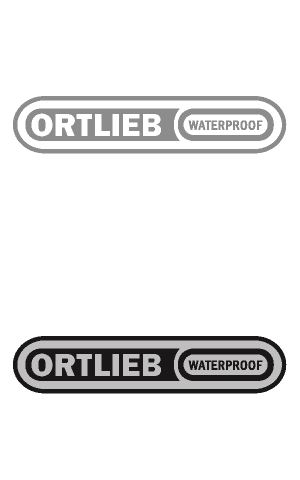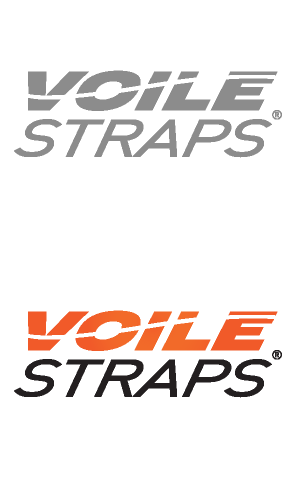Straz Sealant Funnel Review: A Simple Sealant Solution
Always mindful of the hidden costs of convenience, Nic recently added a new tool to his home workshop that seems to offer all benefit with no real tradeoffs. The Straz sealant funnel might be one of the simplest yet most effective pieces of kit for the DIY-minded mechanic. Find the full review here…
PUBLISHED May 22, 2025
Earlier this year, Tim Straz walked up behind me while I was shooting some bikes at the Philly Bike Expo. He surprised me, as I was deep in the throes of an expo work weekend, but he was kind and brief. He handed me this small, blue cylinder and explained its core function.
“It makes putting sealant in your tires easier. No mess, no issues, it’s just easy,” he said.
You see a lot of products at these kinds of shows, and it’s easy for the small ones to get lost in the sheer volume of information you’re trying to process. I had so much going on at that moment that I didn’t think much about this 3D-printed device. I just shoved it in my bag and moved on.

A few weeks later, as I was setting up a new pair of tires, I struggled to find my travel-size Stan’s sealant bottle. Instead of using their injector system, I filled the travel-size bottle with a larger refill size and put about two and a half servings in a tire. It was a little tedious and made a mess since the nozzle has to be buried in the valve and then creates a vacuum as you squeeze sealant in—this can suck it back out and/or spurt sealant. It was an okay solution that got more use out of the travel-size bottle, and it worked better than their syringe system—a device that had a solid chance of clogging, or worse, fully exploding if you squeeze the plunger too hard. Then I remembered Tim and that little blue funnel.
Digging through the extremely organized pile of “bike stuff” in the corner of my living room, the funnel appeared, clean and uncomplicated. With a threaded bit at the tapered end of the device, I simply removed the valve core and threaded the Straz sealant funnel onto the valve. It was rock solid but didn’t yield the annoying result of moving the base of the valve. Setting the tire slightly offset from 90 degrees, I poured some fresh Stan’s sealant in and watched it go down with ease: no bubbles, no clogging, no issues. The funnel opening took plenty of sealant, and I’d poured in the requisite amount. It was a much quicker and cleaner sealant-filling process than ever before, thanks to a few simple but important aspects of its design.

Firstly, its size. While it isn’t too big, the issue you might have with a closed system like a plunger or a DIY method like the travel bottle hack mentioned above is “backwash.” Depending on the position of the tire, putting sealant into a deflated tire, especially if you’re just doing it with the tire on the floor—as I tended to before getting a bike stand—might spit sealant back out of the valve. It’s much more common with the DIY bottle method than the plunger/syringe system but still happens occasionally. Simply offsetting the valve/tire so that it’s not directly below the filling mechanism helps here, but it requires some care since the sealant can spill out of the filling device at the offset angle. Because the Straz sealant funnel has substantial volume built into it and isn’t “closed” in the sense that it doesn’t create an air vacuum, I have found that it essentially negates any “backwash” issues. There’s effectively no spillage, and at a slight angle, it can still hold a fair amount of sealant.
Second, threading onto the valve hasn’t incurred the issues I thought it might. Because tubeless systems can sometimes be a delicate ecosystem, pumps and devices that thread onto valves can unseat the seal that has formed near the weakest point of any tubeless system: the valve. Thus far, the Straz sealant funnel has threaded onto all of my standard Presta valves with ease and without much rotation during the threading process.
Some suggest that pouring sealant directly into the tire before loosely setting the bead remedies the valve-oriented issues by simply bypassing the valve. However, not only is this less convenient with a tire that’s already set and simply needs a sealant refresh, but there are good reasons not to use this method. I have never set up a tubeless tire by pouring in sealant first for fear of a sealant explosion and bead security. I always set the bead on a wheel “dry” because, in my opinion, the seal on a tubeless system should always be able to hold some pressure without sealant. Though it’s harder to dry set tires with thinner casings (from brands like Ultradynamico and Rene Herse), it’s not impossible, and I find that the bead is much more secure if it’s not dependent on sealant for the first seal. Most tires with typical casings can even be ridden entirely sans sealant and should hold pressure without any sealant.

Though there isn’t a ton of complexity happening with the Straz sealant funnel, I don’t think there needs to be. It’s a simple, effective component that hits a hole in the market. As it stands, the most popular means of putting sealant in a tire seem to be some mix of bypassing the valve in the initial tire set up, a syringe system from Stan’s or Park Tool, and the DIY “hack” of using a travel-size bottle. The Straz sealant funnel seems to improve on each method by simply making the access point of the valve larger and not creating a closed, potentially high-pressure system.
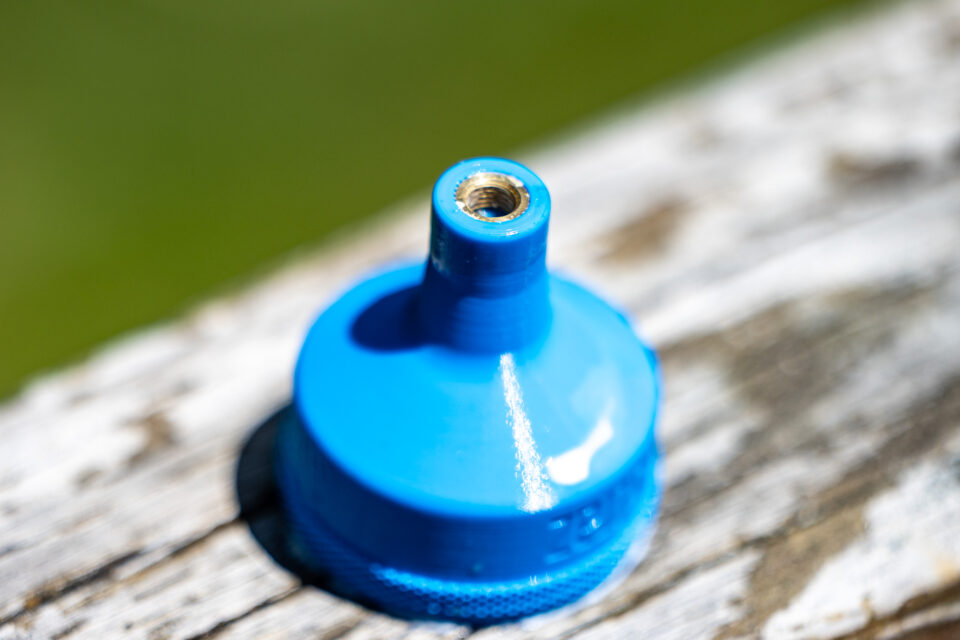
Despite having better results with the Park Tool syringe than the Stan’s one, it’s a tool that has a few moving parts, can get clogged if not immediately cleaned after used, and can break or malfunction with some degree of hamfisted-ness. With a simple 3D-printed part that retails for $17.99, you get a secure attachment that creates what has been the easiest means of getting sealant into a tire, whether it’s the first time or just for a freshener.
Pros
- Affordable at $17.99 USD.
- Simple with no moving parts.
- Lightweight and packable.
- Easy to clean.
- Wide mouth takes in a lot of sealant and isn’t as susceptible to clogs.
Cons
- Threading onto the valve could, in theory, unseat the seal.
- You could always just use a travel bottle.
- Made of 3D-printed plastic—certainly not an unimpeachable material for the planet.
- Model Tested: Straz Sealant Funnel
- Actual Weight: 16 grams (0.5 oz)
- Place of Manufacture: USA
- Price: $17.99 at Straz Components
- Manufacturer’s Details: Straz Components
Wrap Up
Although there are many ways to fill tires with sealant, the Straz sealant funnel seems to be the best way to do so. Without the added complexity of a syringe system, this solid and straightforward design provides the best of all worlds. With a 30 mL capacity for filling, it doesn’t even have a tradeoff in terms of speed or amount of sealant available. It’s small, affordable, easy to use, and the kind of idea that reinforces its ingenuity through the simplicity of its function.
Further Reading
Make sure to dig into these related articles for more info...
Please keep the conversation civil, constructive, and inclusive, or your comment will be removed.

We're independent
and member-supported.
Join the Bikepacking Collective to make our work possible:











